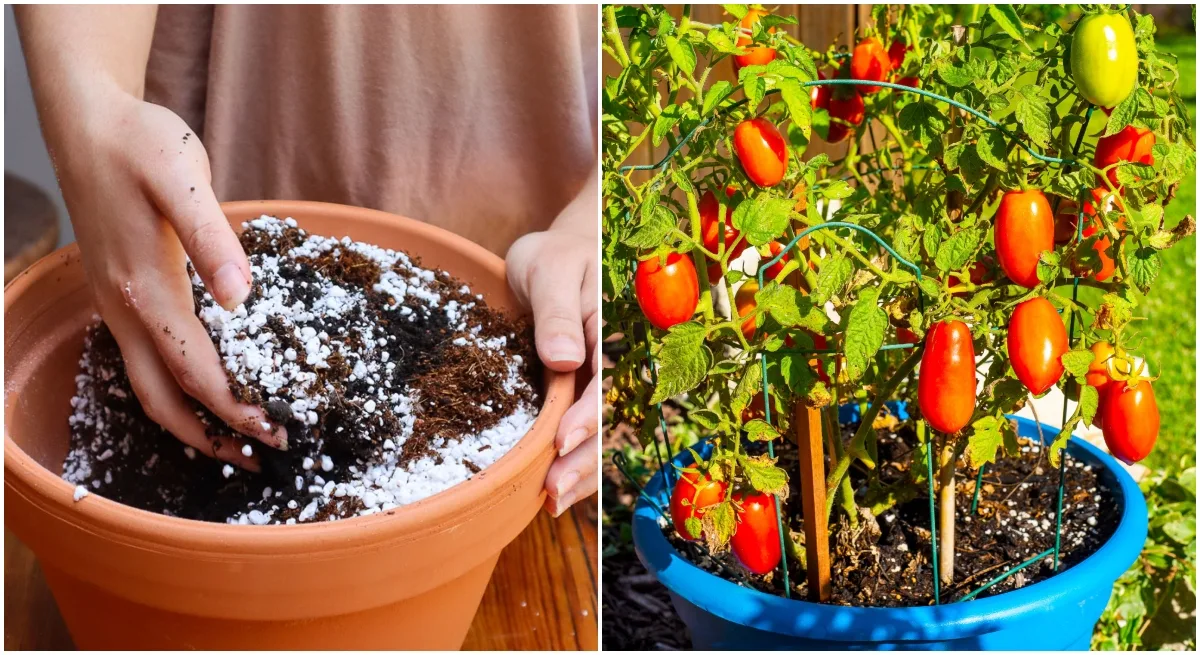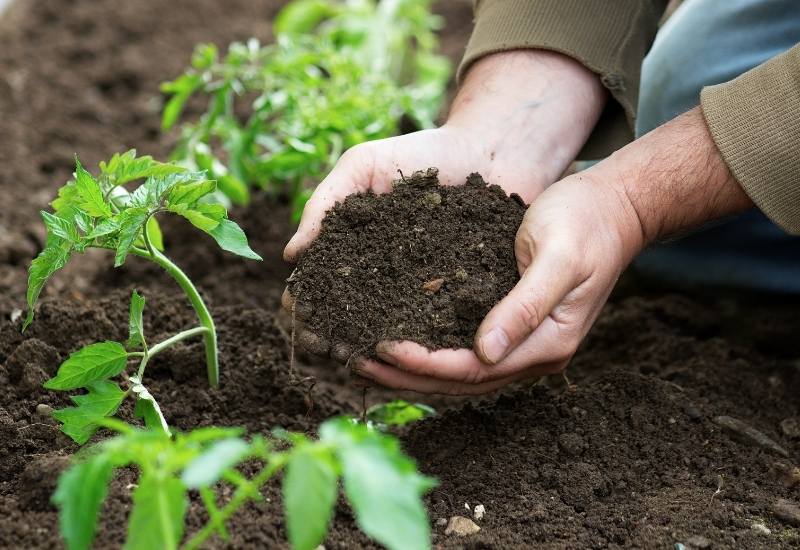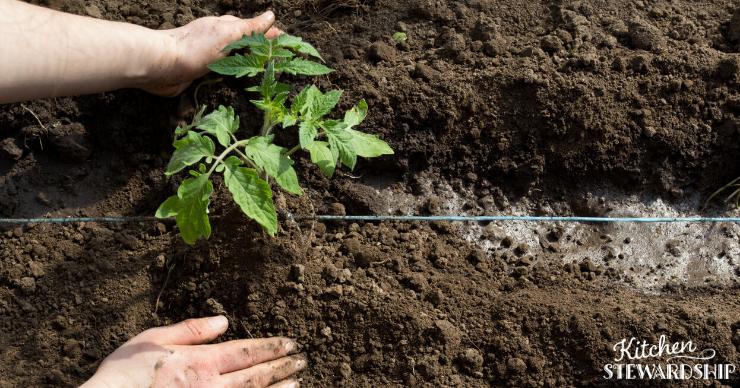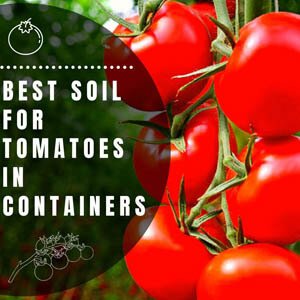Determining the optimal soil for cultivating tomatoes is a crucial factor in achieving a bountiful and thriving crop. With an array of soil types available, each with its own unique composition, it becomes imperative to discern which soil provides the ideal growing conditions for this particular fruit. In this article, you will explore the key elements that make up the best soil for tomatoes, allowing you to make informed decisions and cultivate a flourishing tomato garden.

Key Factors for Tomato Soil
When it comes to growing healthy and productive tomato plants, the quality of the soil plays a crucial role. There are several key factors that determine the suitability of soil for tomato cultivation, including drainage, texture, pH level, and nutrient content. Understanding and optimizing these factors is essential for ensuring the optimal growth and development of tomato plants.
Drainage
One of the most important factors to consider when it comes to tomato soil is its drainage capability. Tomato plants thrive in well-drained soil that allows excess water to flow away easily. Poor drainage can lead to waterlogged soil, which can drown the roots and cause root rot. To ensure proper drainage, it is important to choose a soil type that allows water to drain freely and avoid compacted soils or those with high clay content.
Texture
The texture of soil refers to the relative proportion of sand, silt, and clay particles. The ideal texture for tomato soil is loamy soil, which consists of a balanced mix of sand, silt, and clay. Loamy soil has good drainage properties while retaining sufficient moisture for plant growth. It also allows for easy root penetration and nutrient uptake. Avoid soils that are too sandy or too clayey, as they can either drain too quickly or retain too much water, leading to poor tomato plant growth.
pH Level
The pH level of soil measures its acidity or alkalinity. Tomato plants prefer slightly acidic soil with a pH level ranging from 6.0 to 6.8. In this pH range, the availability of essential nutrients for tomato plants is optimized. A pH level that is too high or too low can lead to nutrient deficiencies or toxicities. It is important to regularly test the pH level of the soil and make adjustments if necessary to maintain the optimal pH range for tomato cultivation.
Nutrients
Nutrient availability is another critical factor for tomato soil. Tomato plants require a variety of essential nutrients, including nitrogen, phosphorus, potassium, calcium, magnesium, and micronutrients. These nutrients play vital roles in plant growth, flower and fruit development, and overall plant health. Soil should be rich in organic matter and well-balanced in nutrient content to support optimal tomato plant growth. Regular soil testing can help identify nutrient deficiencies or imbalances and guide appropriate fertilization practices.
Characteristics of the Best Soil for Tomatoes
To achieve the best soil for tomato cultivation, certain characteristics must be present. These characteristics include loamy soil texture, good drainage, slightly acidic pH, and richness in organic matter.
Loamy Soil
The ideal soil for tomatoes is loamy soil, which offers a balanced blend of sand, silt, and clay. Loamy soil provides optimal drainage while retaining adequate moisture for plant growth. The texture of loamy soil allows for easy root penetration and nutrient uptake, promoting healthy tomato plant development.
Well-Drained Soil
Tomato plants thrive in well-drained soil that allows excess water to drain away quickly. Poorly drained soil can lead to waterlogged roots and root rot, hampering the growth and health of tomato plants. To ensure proper drainage, it is important to choose soil that allows water to flow freely and avoid compacted or clayey soils.
Slightly Acidic pH
Tomato plants prefer slightly acidic soil with a pH range of 6.0 to 6.8. In this pH range, the availability of essential nutrients for tomatoes is optimized. Maintaining the appropriate pH level is crucial for nutrient absorption and overall plant health. Regular soil testing and adjusting the pH if necessary ensures the best growing conditions for tomatoes.
Rich in Organic Matter
Organic matter is essential for enriching and improving soil fertility. Adding organic matter, such as compost or well-rotted manure, to the soil increases its water-holding capacity, improves nutrient availability, and enhances soil structure. This benefits tomato plants by promoting healthy root development, nutrient uptake, and overall growth. Regular addition of organic matter is recommended to maintain soil fertility and structure.

Checking and Improving Your Soil
To ensure that the soil is optimal for tomato cultivation, it is important to regularly check its characteristics and make necessary improvements. Soil testing, amending soil, and proper fertilization are key steps in achieving the best soil conditions for growing tomatoes.
Soil Testing
Regular soil testing is crucial for determining the nutrient composition and pH level of the soil. Soil testing kits or professional laboratories can provide accurate measurements of important soil parameters. By analyzing the test results, it becomes possible to identify nutrient deficiencies, imbalances, or pH discrepancies. This information guides the selection and application of appropriate soil amendments and fertilizers.
Amending Soil
Amending soil involves improving its physical properties, nutrient content, and pH level. Soil amendments come in various forms, including organic matter, minerals, and fertilizers. Adding organic matter, such as compost, to the soil improves its structure, nutrient-holding capacity, and drainage. Mineral amendments, such as lime or sulfur, can be used to adjust the pH level of the soil. By carefully selecting and applying the right amendments, it is possible to optimize the soil conditions for tomato cultivation.
Fertilization
Fertilization is a crucial aspect of maintaining soil fertility and providing essential nutrients for tomato plants. Fertilizers can be organic or inorganic, each with its own advantages and disadvantages. Organic fertilizers, such as compost or manure, enhance soil fertility and improve long-term soil health. Inorganic fertilizers, on the other hand, offer more immediate nutrient availability but may have negative environmental impacts if not used correctly. Properly timed and balanced fertilization practices ensure that tomato plants receive the necessary nutrients for healthy growth and abundant yield.
Container Gardening and Soil
Container gardening offers a convenient and practical way to grow tomatoes, especially in limited spaces or areas with poor soil quality. Choosing the right container, meeting container soil requirements, and proper fertilization are essential for successful tomato cultivation in containers.
Choosing the Right Container
Selecting the appropriate container is crucial for growing tomatoes in containers. Containers should be large enough to accommodate the root system of tomato plants and provide sufficient space for growth. They should have drainage holes to prevent waterlogging and allow excess water to flow out. Materials like plastic, ceramic, or fabric pots can be used, depending on personal preference and climate conditions. Consider the size, weight, and durability of the container when choosing the right one for tomato cultivation.
Container Soil Requirements
Container soil differs from garden soil as it must provide a suitable environment for plant growth within a limited space. It is important to use a high-quality potting mix specifically formulated for container gardening. Potting mixes are lightweight, well-drained, and nutrient-rich, providing optimal conditions for tomato plants. Avoid using regular garden soil in containers, as it can become compacted and hinder root growth. Regularly monitor soil moisture levels and adjust watering accordingly to ensure proper plant hydration.
Fertilizing Container-Grown Tomatoes
Fertilizing container-grown tomatoes is important for replenishing nutrients in the limited space of the container. Potting mixes contain a limited amount of nutrients, so additional fertilization is necessary for sustained plant growth. Organic fertilizers, such as fish emulsion or seaweed extract, can be used to provide slow-release nutrients. Slow-release granular fertilizers specifically formulated for container plants are also available. Follow the manufacturer’s instructions for application rates and timing to avoid nutrient deficiencies or excesses.

Common Soil Mistakes to Avoid
In tomato cultivation, avoiding common soil mistakes is essential for ensuring healthy plant growth and successful harvests. Some common soil mistakes include compacted soil, heavy clay soil, excessive water retention, and imbalanced nutrients.
Compacted Soil
Compacted soil occurs when soil particles are tightly packed together, hindering water drainage and root penetration. This can lead to poor aeration, nutrient deficiencies, and stunted plant growth. Regularly aerating the soil by loosening it with a garden fork or tiller helps prevent compaction and promotes healthy root development.
Heavy Clay Soil
Heavy clay soil, characterized by small particles that retain excess moisture, is not suitable for tomato cultivation. Clay soil drains poorly and can become waterlogged, leading to suffocated roots and root rot. Amending clay soil with organic matter, such as compost or well-rotted manure, improves its drainage and nutrient-holding capacity. Adding sand or perlite can also help lighten clay soil and enhance its drainage properties.
Excessive Water Retention
Excessive water retention in the soil can drown tomato roots and cause root rot. Overwatering or using poorly drained soil can lead to waterlogged conditions. It is important to water tomato plants appropriately, allowing the soil to dry between watering intervals. Providing proper drainage through soil amendments and using well-drained soil or containers helps prevent excessive water retention.
Imbalanced Nutrients
Imbalanced nutrient levels in the soil can hinder tomato plant growth and development. Nutrient deficiencies or excesses can manifest in stunted growth, yellowing leaves, poor flowering, or reduced fruit production. Regular soil testing helps identify nutrient imbalances and allows for appropriate fertilization to correct deficiencies. Maintaining a balanced nutrient supply promotes healthy tomato plant growth and optimal yields.
Alternatives to Garden Soil
In situations where garden soil is not readily available or suitable for tomato cultivation, alternatives such as potting mix, homemade soil mix, or soilless growing media can be used.
Potting Mix
Potting mix is specifically formulated for container gardening and provides an ideal medium for growing tomatoes in containers. It is a lightweight, well-drained mixture that generally consists of peat moss, perlite, vermiculite, and sometimes added nutrients. Potting mixes ensure proper aeration, moisture retention, and nutrient availability for container-grown tomato plants.
Homemade Soil Mix
A homemade soil mix can be created by combining various ingredients to achieve an optimal growing medium for tomatoes. Common components include a mixture of garden soil, compost, perlite or vermiculite for improved drainage, and organic matter for enhanced fertility. Homemade soil mixes offer flexibility in adjusting nutrient levels and soil properties, enabling customization for specific tomato varieties or growing conditions.
Soilless Growing Media
Soilless growing media, such as coco coir, peat moss, or rockwool, provide an alternative to traditional garden soil. These media are lightweight, sterile, and often pH-neutral, making them suitable for hydroponic or container-based tomato cultivation. Soilless media offer good water retention, aeration, and nutrient availability. However, they require careful management of watering and fertilization to ensure optimal plant growth.

Crop Rotation and Soil Health
Implementing crop rotation is an effective strategy for maintaining soil health, preventing disease buildup, and promoting sustainable tomato cultivation. Crop rotation involves the systematic planting of different crop families in different areas of the garden over the years.
Benefits of Crop Rotation
Crop rotation offers several benefits for soil health and tomato cultivation. It helps break pest and disease cycles by interrupting their life cycles and reducing the buildup of soilborne pathogens. Different crop families have different nutrient requirements, allowing for more balanced nutrient management and preservation of soil fertility. Crop rotation also helps improve soil structure, water retention, and overall soil health through the introduction of diverse plant species.
Rotating Away from Nightshades
Tomatoes belong to the nightshade family, along with other crops like peppers, eggplants, and potatoes. To reduce the risk of soilborne diseases and pests that affect nightshade plants, it is advisable to rotate tomatoes with crops from different plant families. By avoiding consecutive planting of nightshades in the same area, the soil is given time to recover, reducing the chances of disease and promoting better overall soil health.
Cover Crops for Soil Improvement
Cover crops are plants grown specifically to improve soil health, fertility, and structure. Incorporating cover crops in tomato rotations offers several benefits, including weed suppression, erosion control, nutrient cycling, and improved soil structure.
Benefits of Cover Crops
Cover crops provide numerous advantages for soil improvement in tomato cultivation. They protect the soil from erosion, especially during heavy rainfall or strong winds. The dense canopy of cover crops shades out weeds, reducing competition and minimizing the need for chemical weed control. Cover crops also help break up compacted soil, improve water infiltration, and enhance nutrient availability for subsequent tomato plantings. Additionally, cover crops can be converted into organic matter through incorporation or mulching, further enriching the soil.
Suitable Cover Crops for Tomatoes
Certain cover crops are particularly beneficial for tomato soil improvement. Leguminous cover crops, such as hairy vetch or crimson clover, fix atmospheric nitrogen and increase soil fertility. They also contribute organic matter when incorporated or mowed down as mulch. Grass cover crops, such as rye or barley, help suppress weeds and build soil structure. Selecting cover crops that suit the climate, growing season, and intended benefits is essential for successful soil improvement in tomato cultivation.

Organic vs. Inorganic Fertilizers
The choice between organic and inorganic fertilizers is a crucial decision in tomato cultivation, as it impacts soil health, environmental sustainability, and plant nutrition.
Benefits of Organic Fertilizers
Organic fertilizers offer several benefits for tomato plants and soil. They are derived from natural sources, such as compost, manure, or plant residues, and provide slow-release nutrients. Organic fertilizers improve soil fertility, enhance soil structure, and promote the growth of beneficial soil microorganisms. They also increase water-holding capacity and reduce the risk of nutrient leaching. Organic fertilizers contribute to long-term soil health and sustainability, making them a preferred choice for many organic gardeners.
Pros and Cons of Inorganic Fertilizers
In contrast, inorganic fertilizers are commercially produced and formulated to provide readily available nutrients. They offer quick nutrient uptake for plants and are often convenient to use. However, inorganic fertilizers can be overused, leading to nutrient imbalances or environmental issues. Excessive use of inorganic fertilizers can result in nutrient leaching into groundwater or surface water, polluting natural ecosystems. Careful application and monitoring of inorganic fertilizers are necessary to prevent negative impacts on soil health, water quality, and overall environmental sustainability.
Managing Soil Pests and Diseases
Soil pests and diseases can significantly affect the growth and yield of tomato plants. Implementing effective preventive and control measures is crucial for managing soilborne pests and diseases.
Preventing and Controlling Soilborne Pests
Soilborne pests, such as nematodes or wireworms, can cause damage to tomato roots and result in stunted growth or wilting. To prevent and control soilborne pests, careful site selection and sanitation practices are important. Avoid planting tomatoes in areas known to be infested with these pests. Practice crop rotation with non-susceptible crops to break pest cycles. Additionally, using resistant or tolerant tomato varieties can help minimize damage. Biological control methods, such as beneficial nematodes or predatory insects, may also be employed to reduce soil pest populations.
Addressing Soil-borne Diseases
Soilborne diseases, including bacterial wilt or fusarium wilt, can cause significant damage to tomato plants. Preventing the introduction of soilborne pathogens is crucial for disease management. Sanitizing garden tools, equipment, and containers helps reduce pathogen spread. Planting disease-resistant tomato varieties and using disease-free seeds or transplants are additional preventive measures. Adjusting cultural practices, such as avoiding overhead irrigation and providing proper spacing for air circulation, helps minimize disease development. If soilborne diseases are detected, soil solarization or the application of approved fungicides may be used as control measures.
In conclusion, the best soil for tomatoes is characterized by good drainage, loamy texture, slightly acidic pH, and richness in organic matter. Optimizing these soil factors ensures the optimal growth and productivity of tomato plants. Regular soil testing, amending soil, and proper fertilization are important for maintaining soil quality. Container gardening provides an alternative for growing tomatoes in limited spaces, requiring specific container soil and fertilization practices. Avoiding common soil mistakes, such as compacted soil, heavy clay soil, excessive water retention, and nutrient imbalances, is crucial for successful tomato cultivation. Alternatives to garden soil, such as potting mix or soilless growing media, offer viable options. Implementing crop rotation, cover crops, and organic fertilizers contribute to soil health and sustainability. Effective management of soil pests and diseases involves preventive measures and control practices. By considering and implementing these factors and strategies, you can ensure the best soil conditions for growing healthy and productive tomato plants.



